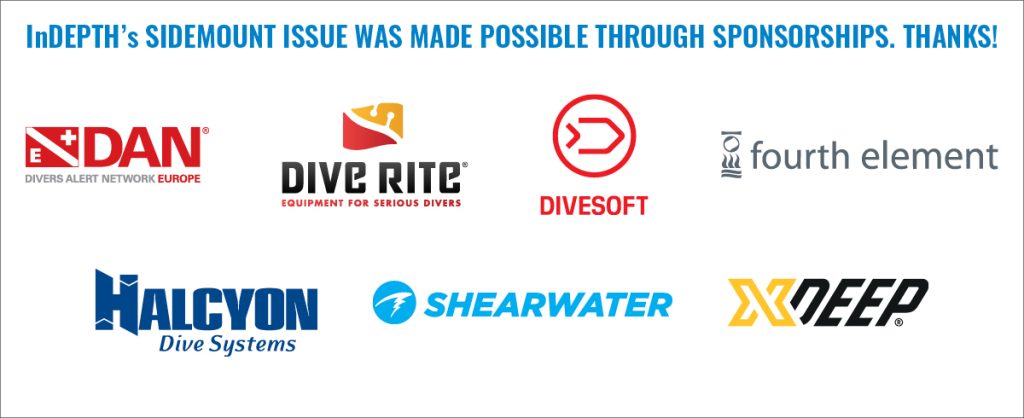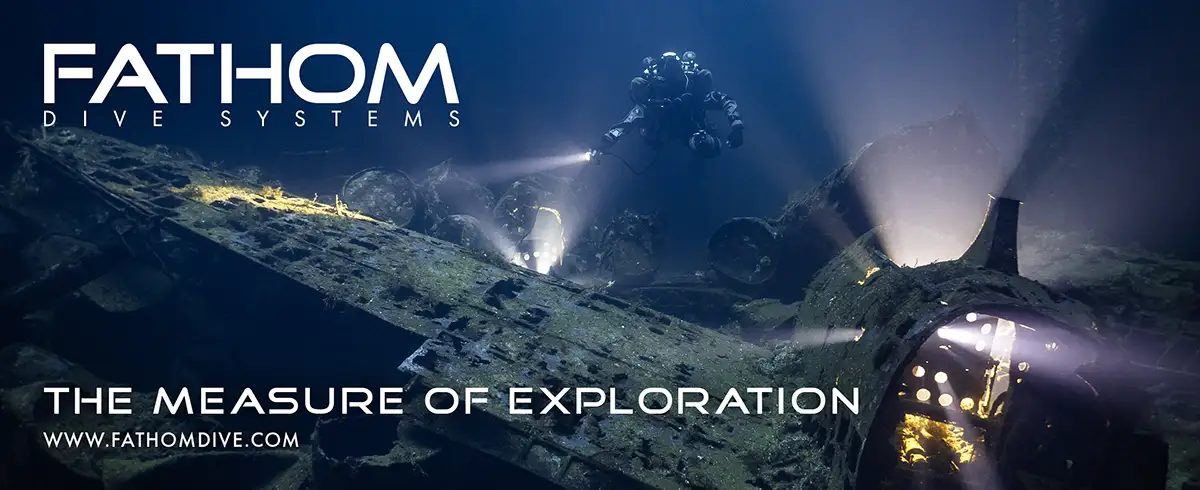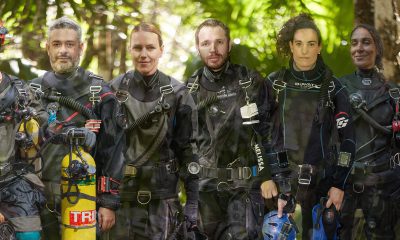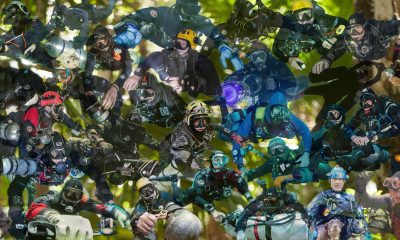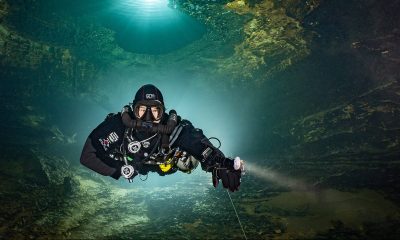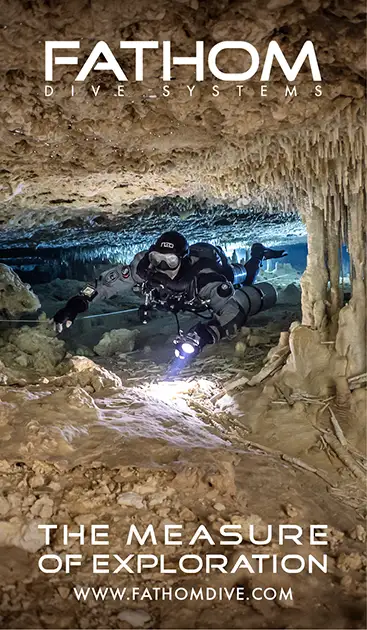Community
The Who’s Who of Sidemount

Steve Lewis
Steve is a long time dive-industry professional who makes his living as a training, marketing and product consultant for clients in the private and public sectors of the dive and dive-related industries. He is currently the Vice President of Marketing for RAID, and previously served as its Director of Diver Training. Though he has retired from teaching, he remains an active cave and wreck diver, though he prefers sidemount cave diving. Before joining RAID, Steve was a technical instructor trainer for Technical Diving International (TDI), and later served as the Marketing and Communications director for TDI, Scuba Diving International (SDI) and Emergency Response Diving International (ERDI). He is a prolific author and has published dozens of articles about diving and diver training, and has written several textbooks and instructor guides, including “The Six Skills and Other Discussions: Creative Solutions for Technical Divers (2011),”Staying Alive: Applying Risk Management to Advanced Scuba Diving(2014), and “Death in Number Two Shaft: The Underwater Exploration of Newfoundland’s Bell Island Mine” (2018). He is currently working on a new book, and a new addition of Six Skills.
Interview by Michael Menduno
What is sidemount to you?
That’s a question with an ever-changing character. Over the years what sidemount means to me has changed. It has evolved. And that’s an important thing to get across:sidemount itself has evolved. For context, my first experiences on Scuba were sidemount. We were dry caving as kids. I had a five-liter bottle strapped to my side and a regulator in my mouth and we walked through a sump. We didn’t swim mind you, we walked, because we weren’t divers. But all that’s beside the point. Sidemount has evolved.
Now, since I’ve given up teaching, I’ve found myself concentrating purely on cave. And what it means for me in terms of cave diving, it’s not just being able to get into a small space, although that’s handy. It’s nice to be able to go into a highly decorated low-level cave and not knock your way through all those stalactites because you got something on your back. One hopes that one doesn’t do that using sidemount but that’s okay. I think therefore that my preference is now, and my experience now, is very much geared to sidemount diving in a cave.
Any recommendations on where to go to learn sidemount diving?
The Yucatán Peninsula, no hesitation. Learn from theMexican cave diving community. I don’t know the European market that well, but right now some of the most talented sidemount divers in the world are working out of Mexico. It’s the environment that triggers the attention to detail because, as you know, the caves are so highly decorated. And I think there is a real awareness in the community that those caves, with the decorations, with the cave furniture that we all love to look at and see and experience, there is this general awareness that we are looking at tens of thousands of years of growth. And there is general awareness that the prospect of breaking a piece of that or damaging that, whether it’s on the ceiling, on a wall or the floor—it doesn’t matter—is absolutely the worst possible thing. That’s like the worst kind of culture canceling!

That makes a lot of sense. Do you think there are still improvements to be made in sidemount diving?
In terms of the technique, I think we’re pretty good. I mean that generally the standard of technique, in terms of instructors, is magnificent. When you see a video of someone in sidemount and their technique is plenty perfect, we can’t improve much on that.
I think the biggest improvement we are going to see is in tanks, in tank design. Of course, we are limited by the physics within that compressed gas container, but I think we are going to see some innovation in the handwheel and the geometry of the valve itself. If I had my druthers and there was someone is prepared to put the money and the research into it, I think you could take a half a dozen active sidemount instructors and come up with a much better valve design than the one we have. I am talking about the external parts of the valve, the handwheel itself.
Was there an epiphany moment for you with sidemount?
Yeah. I had been diving sidemount for quite a long time before it came to me, and my epiphany moment wasn’t exactly a road to Damascus or a come-to-Jesus moment. It was more a realization that, of all the equipment configurations that exist when we are underwater, whether we are on a rebreather, whether we are backmount, whether we are sidemount, whether we are no mount, whatever it is, there is always room for improvement.
And the <epiphany> moment for me was I had been teaching sidemount for a long time when I realized there is a better way to attach that bungee, a better way to attach that anchor clip, and there was a better way to configure my waistband and place my weights. It was a progression that I went through. In fact, ALL sidemount divers tend to go through. Someone said: “If you don’t like the solution, change the problem. Adjust to moments of need and adversity, and change. I feel that applies to the status quo in all high-risk activities. Be ready to change.

I think that’s part of that’s part of the tech ethos and certainly the sidemount tech ethos. Continual improvement.
I’m not too humble to admit it, I was a cluster fuck in the early days. You should probably replace that with Charley Foxtrot for a sensitive audience. But it was true, and I had been teaching it for a number of years. I don’t think I was turning out terrible students, but there was room for improvement.
One of the wake-ups for me was sliding D-rings, made by a sidemount hardware manufacturer in the UK, that actually worked. I know that sounds like that’s not much of change, but it made all the difference. The issue was trying to keep aluminum cylinders down and parallel as opposed to the arse of it sticking up, as you breathe down the gas.
Students learn by seeing as well as by being told. And the actual physical awareness that suddenly you’re looking at your buddy (or instructor or mentor) and they’ve got these tanks sticking up, that’s like a reinforcement. I wonder if mine look like that? Oh shit, they do. Why is that? What can I do about that? So it was another little nuance in teaching.
Any issue with the way sidemount is taught?
If there is a general failing among instructors, and some agencies allow this to happen. And it’s this: Jack or Jill was an ordinary diver until last weekend, when they became a sidemount diver. But because of their instructor standing with training agency ABC, this coming weekend they are going to teach a sidemount class. So they’ve gone from a student program with an instructor, who may or may not be competent, to actually teaching it—zero to hero in the blink of an eye. It’s a dilution of the nuances, a dilution of the attention to detail, and it’s critical that we stop doing this as a community because it just exacerbates the problem. The cluster fuckery expands exponentially when that happens. You’ve seen it happen; I’ve seen it happen. It happens, and it’s not right.
Return to: The Who’s Who of Sidemount
DIVE DEEPER
Speaking Sidemount: E035 – Steve Lewis on Improving Sidemount Diving & Instruction
TDI Blog: Sidemount Diving: It’s Not Just for Caves
Scubaverse: Scuba Diving: Jeff chats to… author, avid cave diver and professional adventurer Steve Lewis
